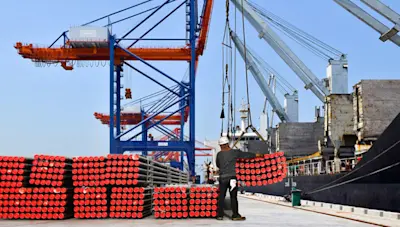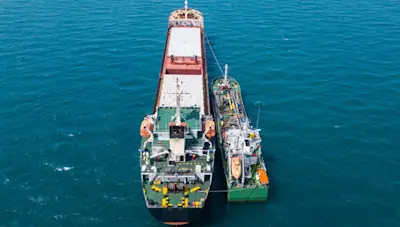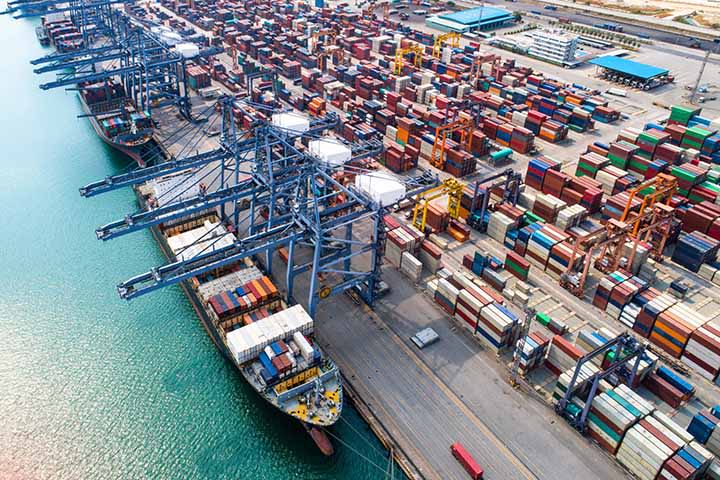Overview
Ship chartering is the hiring out the use of a ship by a vessel owner to another company, the charterer, for the transportation of goods. It may sound straightforward enough, but in practicality, it’s anything but simple. There are many different types of charter contracts, various cost components, and of course many different players involved. In this article, we’ll breakdown the ins and outs of chartering, covering how it works, who’s involved and how costs are divided.
The main players
The two main players in ship chartering are the ship owner and the charterer. There are others as well, the most important being the ship broker. There is also the shipping agent who takes care of the essential in-port details and the ship manager, who takes care of operating and crewing the vessel on behalf of the owner for a fee.
It should be noted that the term charter party refers to the contract itself, and not to the parties entering into the contract. The charter party defines the rate, duration, and terms agreed between the ship owner and the charterer.
The ship owner provides the means for transporting cargo from one port to another. The Charterer enters into a contract with the owner to hire the ship, or space in the ship, for transporting his cargo. In some cases a charterer may own the cargo and employ a ship broker to find a suitable vessel to deliver the cargo for a certain price, called the freight rate.

The charterer may also not have his own cargo, but instead charters a vessel for a certain period of time and trades the ship to carry cargoes at a profit. He can also sub-hire the ship to other charterers in positive market conditions.
The ship broker is essentially a middleman who connects the principals in order to earn a brokerage fee. He can represent either the owner or the charterer in negotiations, and usually specialises in specific areas of cargo carrying. For example, a dry cargo broker focuses on the chartering of bulk carrier vessels. He can represent either an owner looking for a charterer, or a charterer seeking a suitable vessel for shipping his cargo.
Similarly, and as the name suggests, a tanker broker specialises in chartering tanker vessels and has a good understanding of the specific needs for transporting crude oil, gas, oil products, or chemicals.
Shipping Agents are designated to take responsibility for handling shipments and cargoes at the ports on behalf of the owners, fleet managers, and charterers. They handle the essential routine tasks, such as crew transfers, customs documentation, waste declarations and so on, working closely with port authorities. They can also provide detailed information on activities at the destination port, so that the shippers can be aware of situations while the goods are in transit.
Types of charters
The three most common types of charter contracts are the voyage charter, the time charter, and the demise (or bareboat) charter.
Voyage Charter
The basic hiring of a vessel and its crew for a voyage between the port of loading and the port of discharge is known as a voyage charter. In this type of contract, the ship owner is paid by the charterer either on a per-ton basis, or as a lump sum. Port costs, with the exception of stevedoring, fuel costs, and the crew costs are paid by the owner, and payment for the use of the vessel is known as freight.
Under the terms of a voyage charter, a specific time is agreed for the loading and unloading of the cargo. This is known as laytime, which, if exceeded, obliges the charterer to pay demurrage. Conversely, if laytime is saved, the owner may have to pay despatch to the charterer.
There is also a consecutive voyages clause. This is used when one voyage follows another immediately for an agreed number of voyages within a specific timeframe. The ship is thus going back and forth with an agreed cargo between agreed ports.
Time Charter
A time charter refers to the hiring of a vessel for a specific period of time. Here, the owner still manages the ship, but the charterer selects the ports, decides the routing, and has full operational control of the vessel for the duration of the contract. He pays the fuel costs, port charges, cargo handling costs, commissions, and a daily hire fee.
There is also a trip time charter covering a specific voyage route only for the transportation of a specific cargo. It can be said to be a combination of a voyage charter and a time charter. The responsibilities are similar to those with a time charter (the fixed costs being paid by the owner and the variable costs by the charterer), but as with a voyage charter, the period of the contract depends upon when the voyage is completed.
The Demise Charter
Under the terms of a demise charter, also known as a bareboat charter, the charterer has full control of the vessel. Apart from the capital cost of building the vessel, which is the owner’s responsibility, all other costs including fuel, crew, port charges and insurance, are paid by the charterer. The legal and financial responsibility for the vessel rests with the charterer.
Under the demise clause, the contract can be for long period charters lasting for many years. This is fairly common for tankers and bulk carriers. It can be a form of hire-purchase whereby the charterer eventually acquires ownership of the vessel.
In the leisure industry, the term used is Bareboat Yacht Charter and the Demise Charter term is not used. It is normally a short-term charter for a matter of weeks only. Here, the owner supplies the yacht fully fuelled and in seaworthy readiness. The charterer is expected to pay for the fuel consumed.
Contract of Affreightment
Finally, there is what is known as a contract of affreightment. This is not strictly a charter contract, but is somewhat similar to a voyage charter. Under this type of contract, the owner agrees to transport the goods for the charterer on a specified route and for a specific period of time. More than one ship can be used and, in contrast to a true charter, there is no laytime period and no demurrage is payable.
Who pays what?

There are various cost components applicable to all charter contracts. These can be summarized as follows:
In all cases, the owner is responsible for the capital cost of building and equipping the ship. The operating costs (OPEX), i.e. operating and maintaining the ship and complying with all applicable rules and requirements, are also paid by the owner in voyage and time charters. In demise charters, however, the operating costs are paid by the charterer.
Periodic costs are those that are incurred at certain intervals of time. These include, for example, periodic technical inspections and surveys for class classification purposes. Here again, the owner is responsible with time and voyage charters, but not for demise charters. In demise charters, it is the charterer who pays such periodic costs.
Voyage costs cover the fuel, any right of passage dues, such as canal dues, towage and piloting costs, as well as port agency costs. With time and demise charters, the voyage costs are paid by the charterer. Only in voyage charters are these costs paid by the owner.
The same is true of cargo handling costs – the cost of loading and discharging the cargo. With time and demise charters this is the responsibility of the charterer, while the owner pays these costs only with voyage charters.
